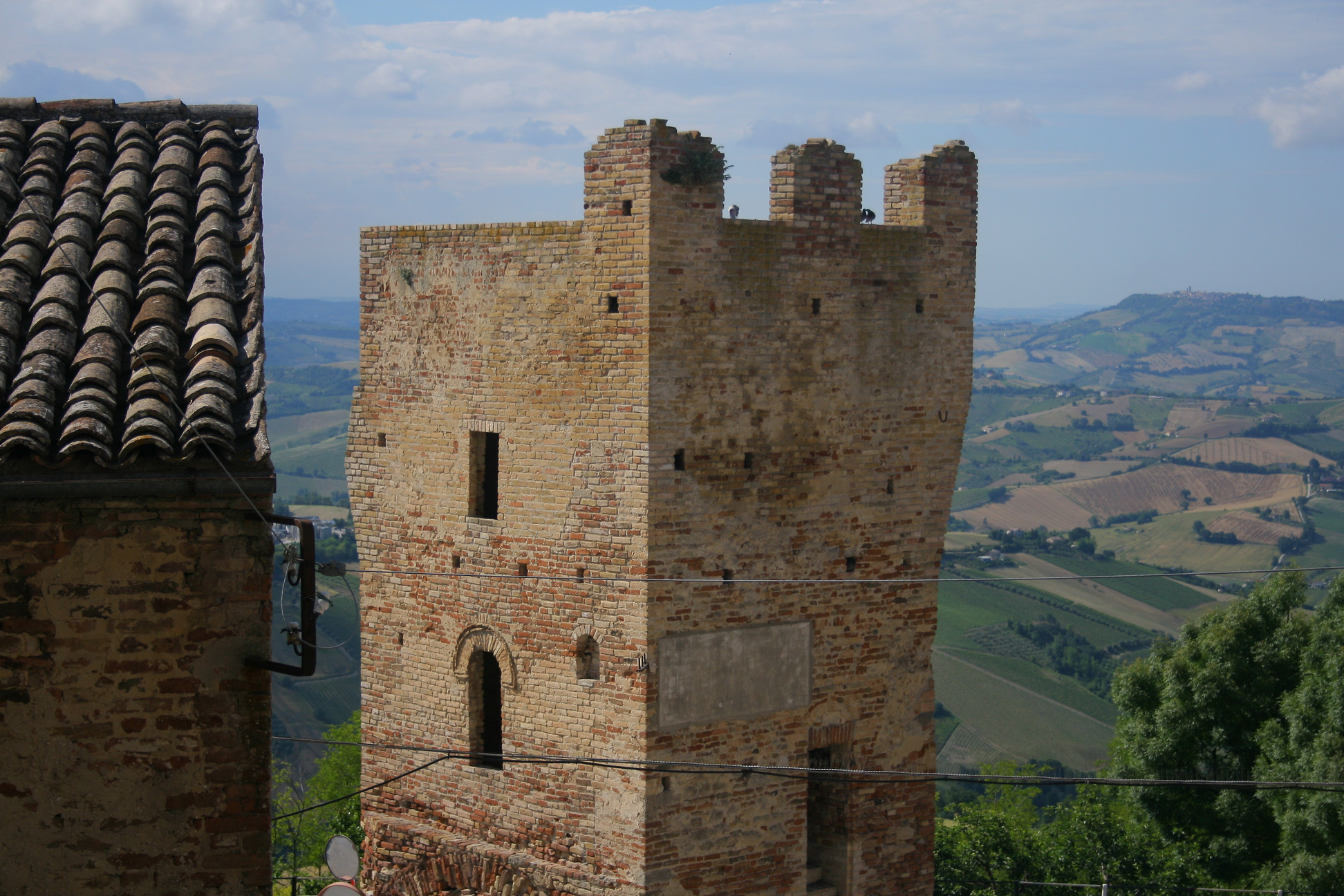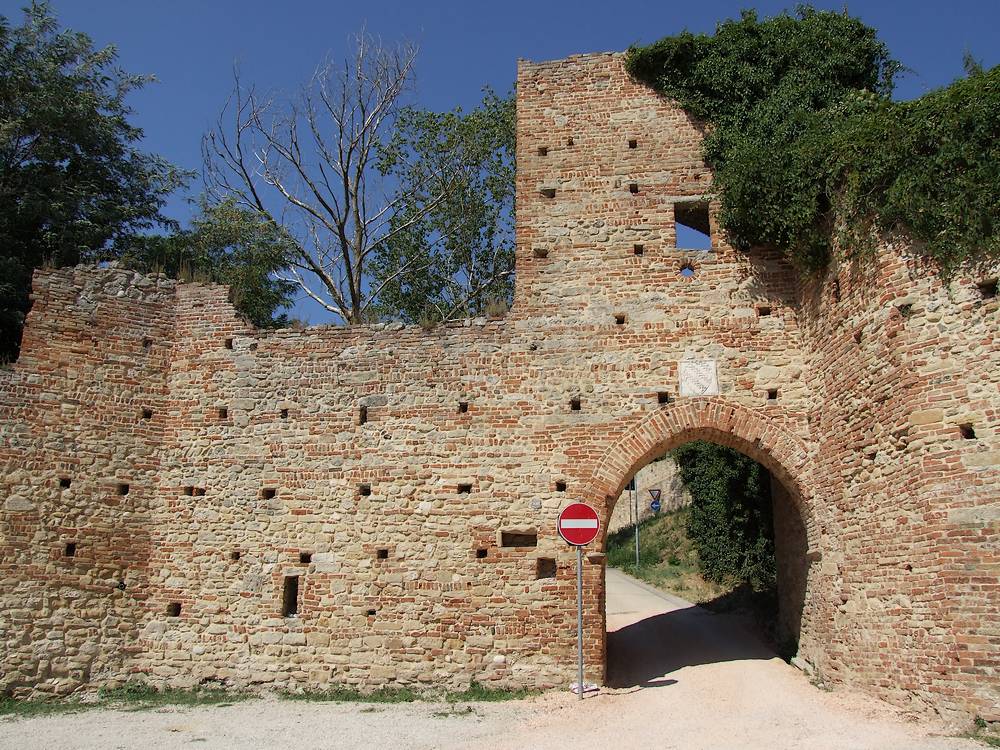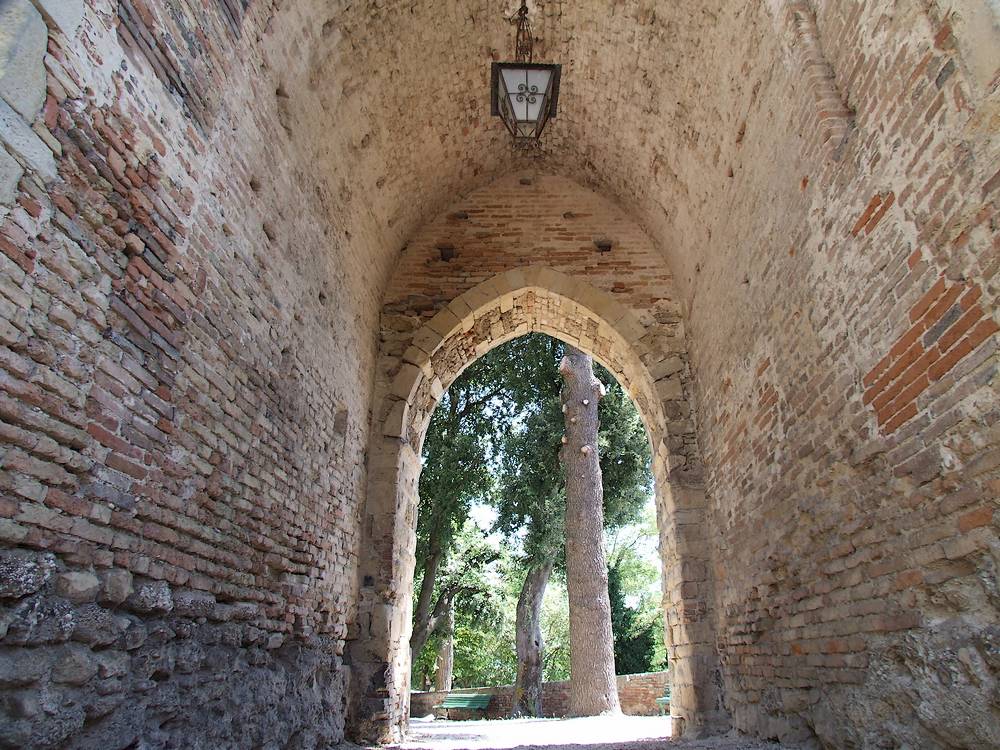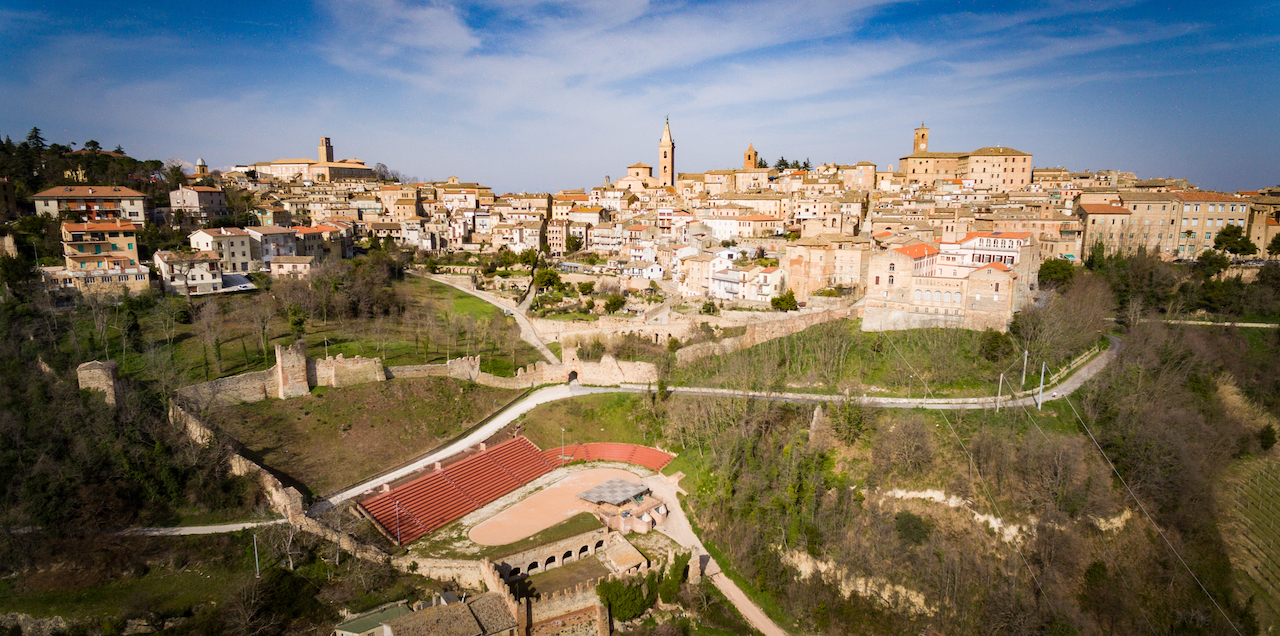Ripatransone’s defensive walls and towers, erected almost certainly after 1205, the year the free municipality was “born,” were crumbling after an assault by Francesco Sforza’s troops in 1444. Through the interest of Ripan Francesco Lunerti, Pope Eugene IV granted Ripatransone a 30-year exemption from taxes to make its reconstruction possible. Other aid was granted by Giosia d’Acquaviva, Duke of Atri, who had ties of blood and affection with the town.
Subjected to various interventions over the centuries, the medieval walls suffered serious damage in the years 1966-67 for the widening of the provincial road “Cuprense.” Nevertheless, that of Ripatransone remains one of the most beautiful and articulated fortified walls in the Marche region. The development of the wall perimeter in a 19th-century engraving is estimated at 2,418 meters; it follows the orography of the site, which varies from neighborhood to neighborhood.
As in the Middle Ages, the city is divided into the districts of Monte Antico, Capo di Monte, San Domenico (or Roflano), and Agello.
The walled enclosure is opened by several gates; the most beautiful is the Porta di Monte Antico. Oriented to the south, with a square plan, it has a pointed-arched fornix; it has overhanging appurtenance on a spur of machicolation corbels, except for the rear side and the left-hand side inside the curtain wall grafted into it. The tower had, as a second security (in addition to the gatehouse), a portcullis allocated toward the interior of the hallway: only part of the sliding seat remains of it. Just above the extrados of the entrance archway is walled a coat of arms rendered illegible. The crenellated crowning, although restored, is as originally provided with Ghibelline battlements, some of which are equipped with musket embrasures; it engages in a system of corbels and plumbholes to exercise both plumbant and piercing defense.
The Agello Gate, also fortified, is oriented to the north. It once had projecting apparatus equipped with plumbatos limited to the sides exposed to a possible attacker, that is, those “extra moenia.”
St. Dominic’s Gate shows a fine stone coat of arms walled above the extrados of the fornix; the crowning was equipped with a light projecting apparatus, which, though lacking a plumbed system, housed the battlements.



